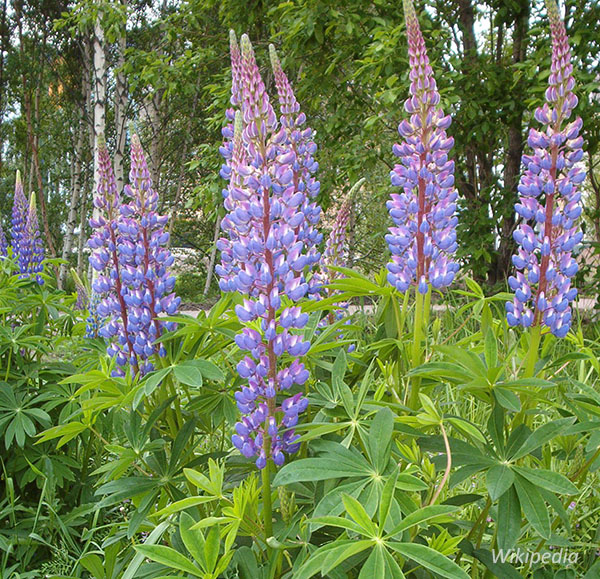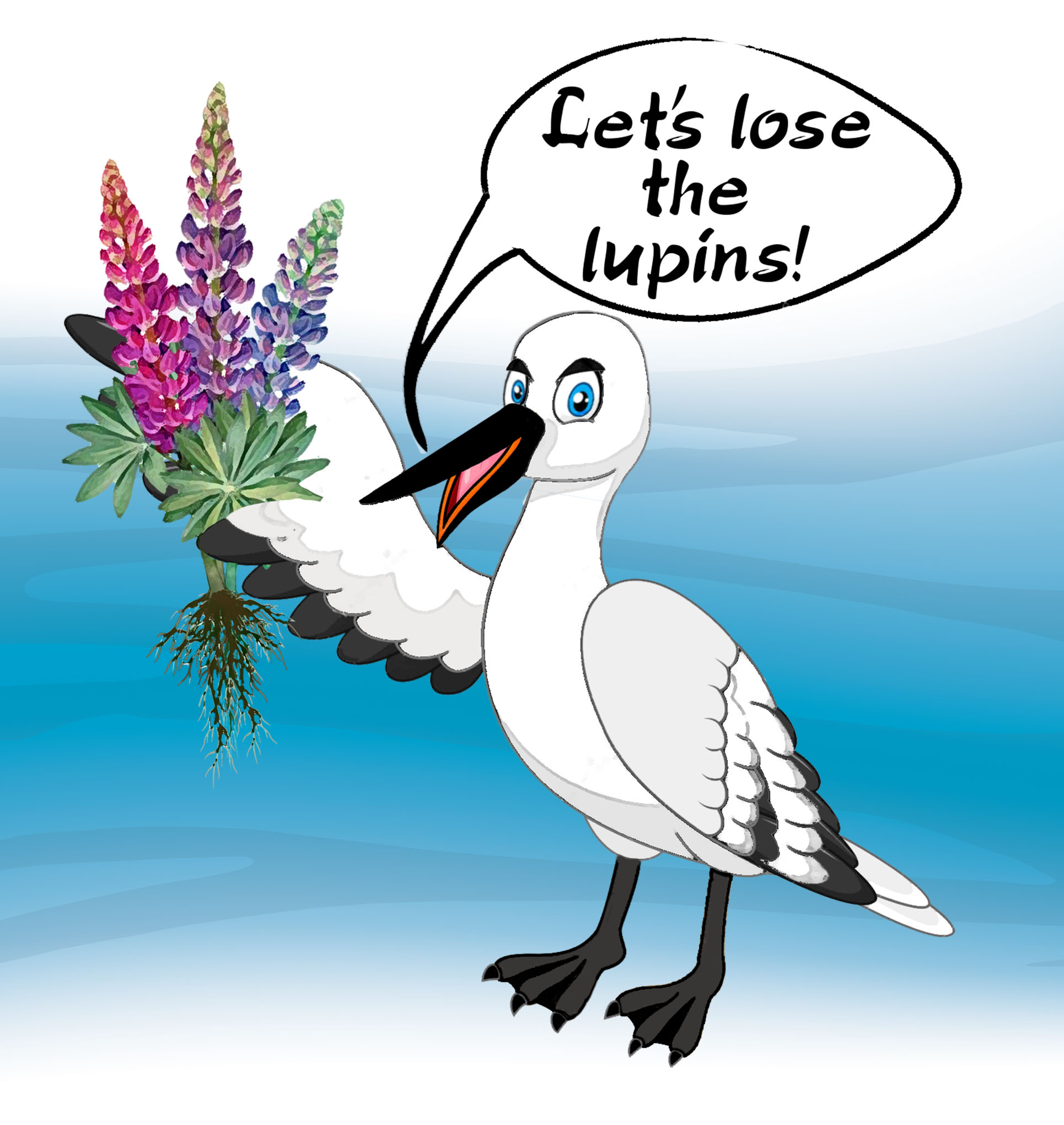Russell lupin
“Through the eyes of a high-country farmer, Russell lupins have the power to transform a wasteland of invasive hawkweed and wilding pines into productive pasture.” – New Zealand Geographic ‘War of the lupins’
The above statement encapsulates a long-held perception that braided rivers are nothing more than ‘wastelands’ that should be converted to agriculture.
While Russell lupins may look beautiful, they’re an aggressive exotic weed that smothers braided riverbeds by growing in dense stands on bare gravel areas. Well adapted to living in the challenging environments of braided rivers, they can produce their own nutrients (nitrogen) and are very effective at dispersing their seeds. Their roots become entwined and hold the gravel together, forming stable areas. The river erodes the edges, creating steep banks. This restricts the water so that instead of braiding, it develops deep, fast-flowing channels, unsuitable for wading birds to feed in. The dense stands also take over the open spaces where braided river birds like to nest.
This is deeply concerning for rare and endangered birds that nest exclusively along braided rivers, particularly black-fronted tern and kakī/black stilt, which normally feed in shallow river braids. Russell lupin also provides cover to predators such as stoats and cats to sneak up on birds.
Why is it a problem?
- Seeds that fall into the water are carried downstream, allowing the plant to invade new areas
- People deliberately disperse seeds along roadsides and waterways because this beautiful but ecologically deadly weed ‘looks pretty’
- Road workers inadvertently spreading it by using gravel contaminated with seed
- Deliberate cultivation: Russell lupins have long been promoted as an ideal food for sheep and as an attractive plant, particularly along the roadside and riverbanks in the Lake Tekapo area. Even today, photos of them are used to showcase the beauty of the area, with no regard for their impact on braided rivers.
What does it look like?
Russell lupin (Lupinus polyphyllus) is an exotic plant that can grow up to 1.5 metres. It is a perennial species, i.e. it flowers and sets seed in the summer, dies back to the stem base over winter, to re-emerge the following summer. Russell lupins produce long, colourful flower heads. The flowers are pea-like and come in a variety of colours; blue, purple, orange, yellow, pink, white or a mixture. Flowers appear from September to February. The leaves, divided into green leaflets, are splayed out like fingers on a hand. Stout seedpods are produced that explode in the summer heat, releasing many dark brown seeds. The seeds are dropped close to the parent plant, allowing the population to spread several metres annually.
Where is it found?
Distribution map; when page opens, just click on the green ‘search’ button without changing any of the settings.

Conservation activities
In March 2017, BRaid submitted to the then National MP Nathan Guy, the then Minister for Agriculture, a paper outlining the problems and noting that promoting Russell lupins for agricultural use was irresponsible. This was deflected to Environment Canterbury (ECan) on the basis that regional councils were responsible for pest management plans.
In August that year, BRaid submitted to the Canterbury Regional Pest Management Plan, requesting that Russell lupins be re-classed as ‘pest organisms’. ECan subsequently reclassed it as a ‘pest organism’ as outlined in the Pest Management plan 2018-2038.
In October 2018, BRaid submitted to Environment Southland requesting the same change of status be given to Russell lupins in its regional pest management plan. Environment Southland declined to do so on the basis that it was, in fact, a matter for the Ministry, not regional councils to decide, thereby abrogating its responsibility. Given the almost nil-attention to braided rivers in Environment Southlands biodiversity ‘strategy’, this decision to not act virtually ensures Russell lupins will continue to propagate.
It is now left to individuals and river care groups in Southland to try to prevent the spread of this noxious plant.
Meanwhile, in Canterbury, Environment Canterbury is continuing its war on braided river weeds.
References and more information
Management
Wild Russell lupin is a declared pest in Canterbury’s Regional Pest Management Plan 2018-2038 and is managed in the Sustained Control programme.
Goal
Over the duration of the plan, Wild Russell lupin will be controlled within specified distances from waterways to prevent its establishment and prevent adverse effects on Canterbury’s environmental values.
Responsibilities
Rurally zoned land occupiers may not plant Russell lupin
- 200m from the edge of the active channel of a braided river
- 50m from any non-braided river
- 10m from any artificial watercourse
- 10m from an adjoining property boundary
Rurally zoned land occupiers need to eliminate all wild Russell lupin within
- 200m from the edge of the active channel of a braided river
- 50m from any non-braided river
- 10m from any artificial watercourse
- 10m from an adjoining property boundary
Environment Canterbury will work with rurally zoned land occupiers to ensure the goal is achieved.
Control
All year round
- Hand pull or dig small plants (all year round). Leave on site to rot down.
- Weed wipe with metsulfuron-methyl 600g/kg (1g/L) or triclopyr 600g/L (200ml/L) or glyphosate (330ml/L). Add penetrant to all herbicide mixtures.
- Cut plant close to ground then to freshly cut stump apply triclopyr 600 g/L (100ml/L) or metsulfuron-methyl 600 g/kg (1g/L) or glyphosate (200ml/L)
Active growing period
- Spray with clopyralid (35ml/10L) or triclopyr 600 g/L (15ml/10L).
Related document
Conservation activities:
- 2019 (ECan): Update of supported projects including weed removal (BRaid seminar)
- Whitcombe Landcare Group


